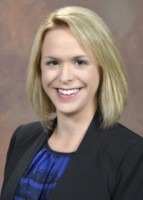Augusta University Health System Launches a Strategic Campaign to Grow Neuroscience Service Line and Build Its Reputation
// By Lisa D. Ellis //
Augusta University Health System is no stranger to change. Over the past five years, it has undergone several rebranding campaigns and two consolidations. Yet through all of these fluctuations, one thing has remained the same: the need to find new and more efficient ways to improve its reputation and continue to grow market share.
is no stranger to change. Over the past five years, it has undergone several rebranding campaigns and two consolidations. Yet through all of these fluctuations, one thing has remained the same: the need to find new and more efficient ways to improve its reputation and continue to grow market share.
The solution has been simple: to build its identity as an academic health center, and to gain trust in the community as a foundation of excellent care. It’s also been essential to promote its neuroscience services, which are a strong contributor to the health system’s bottom line. But the path to accomplish this has taken much effort.
Building on Its Academic Identity
In Augusta, Georgia, August University Health (formerly GRHealth) is a not-for-profit medical center affiliated with Augusta University that operates the region’s only academic health center consisting of Augusta University Medical Center, 154-bed Children’s Hospital of Georgia, and more than 80 outpatient locations, as well as a critical care center.
Until recently, the system was perceived by many area residents as focusing on the indigent, and was having difficulty attracting a strong mix of commercially insured patients. The rebranding efforts—and subsequent campaigns—went to great lengths to change this and draw a better payer mix to help the organization sustain its efforts.
Promoting Augusta University Health’s Strengths

Brianne Clark, marketing analyst for Augusta University Health System
“We are the only academic medical center in the region and the only children’s medical center with level 4 NICU, and the only level 1 trauma center in the region,” explains Brianne Clark, marketing analyst for Augusta University. She adds that the organization wanted to better market these attributes and educate people about the high-quality care available right in the community.
Yet this was a tall order to achieve, especially since the marketing department was feeling pressure to do more with less—and to achieve measurable results in short order.
“As the marketing team, we were tasked with coming up with a way to attract new commercially insured patients while also working with a limited budget,” Clark says. This prompted them to look for outside resources to supplement their own capacity in the most effective way.
